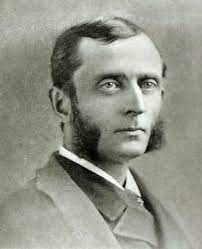
George Miller Beard
George Miller Beard: Pioneering Anxiety Disorder Research and Advocacy
Introduction
In the realm of mental health research and advocacy, few names stand out as prominently as George Miller Beard. Born in 1839, this remarkable physician, writer, and advocate dedicated his life to understanding and raising awareness about anxiety disorders. His groundbreaking work laid the foundation for our modern understanding of these conditions and helped destigmatize mental health issues. This article delves into George Miller Beard’s life and his invaluable contributions to the study and treatment of anxiety disorders.
Early Life and Education
George Miller Beard was born into a family with a strong tradition of medical practice. Growing up in a nurturing environment that emphasized education and compassion, he developed a deep interest in medicine from a young age. He pursued his medical studies at Yale Medical School, where he honed his skills and developed a keen interest in mental health.
The Nervous System and Neurasthenia
Beard’s pivotal work centered around the nervous system and its relationship to various mental and physical ailments. He coined the term “neurasthenia” to describe a condition characterized by symptoms such as fatigue, irritability, and nervousness. Beard argued that neurasthenia was often a result of the stresses of modern life, including the rapid pace of industrialization and urbanization.
His seminal work, “American Nervousness: Its Causes and Consequences,” published in 1881, explored the impact of a fast-paced, competitive society on mental health. This work highlighted the rise of anxiety disorders and neurasthenia in an increasingly complex world and urged for a compassionate and scientific approach to their treatment.
Advocacy for Rest Cure
George Miller Beard was not content with merely identifying the problem—he advocated for tangible solutions. He played a pivotal role in popularizing the “rest cure” treatment, championed by his contemporary, Dr. Silas Weir Mitchell. This treatment involved long periods of rest, isolation from daily stresses, and specific dietary and therapeutic interventions.
The rest cure garnered both support and criticism, but it marked a significant step forward in the treatment of anxiety disorders. Beard’s advocacy for this method aimed to give patients the respite they needed to recover from the physical and mental toll of their conditions.
Legacy and Continued Impact
George Miller Beard’s work had a profound and lasting impact on the field of mental health. He brought attention to the importance of understanding and treating anxiety disorders and neurasthenia, setting the stage for future research and advancements in psychology and psychiatry.
Today, his legacy lives on through the ongoing efforts to raise awareness about mental health issues and provide effective treatments for anxiety disorders. Beard’s dedication to his work, coupled with his commitment to compassionate care, continues to inspire those working in the field of mental health to this day.
Conclusion
George Miller Beard’s life and work were dedicated to shedding light on anxiety disorders and promoting a humane approach to their treatment. His pioneering research and advocacy have left an enduring mark on the field of mental health, paving the way for a more compassionate understanding of those who suffer from these conditions. His legacy serves as a reminder of the importance of empathy, scientific inquiry, and the continuous pursuit of improved mental healthcare for all.
